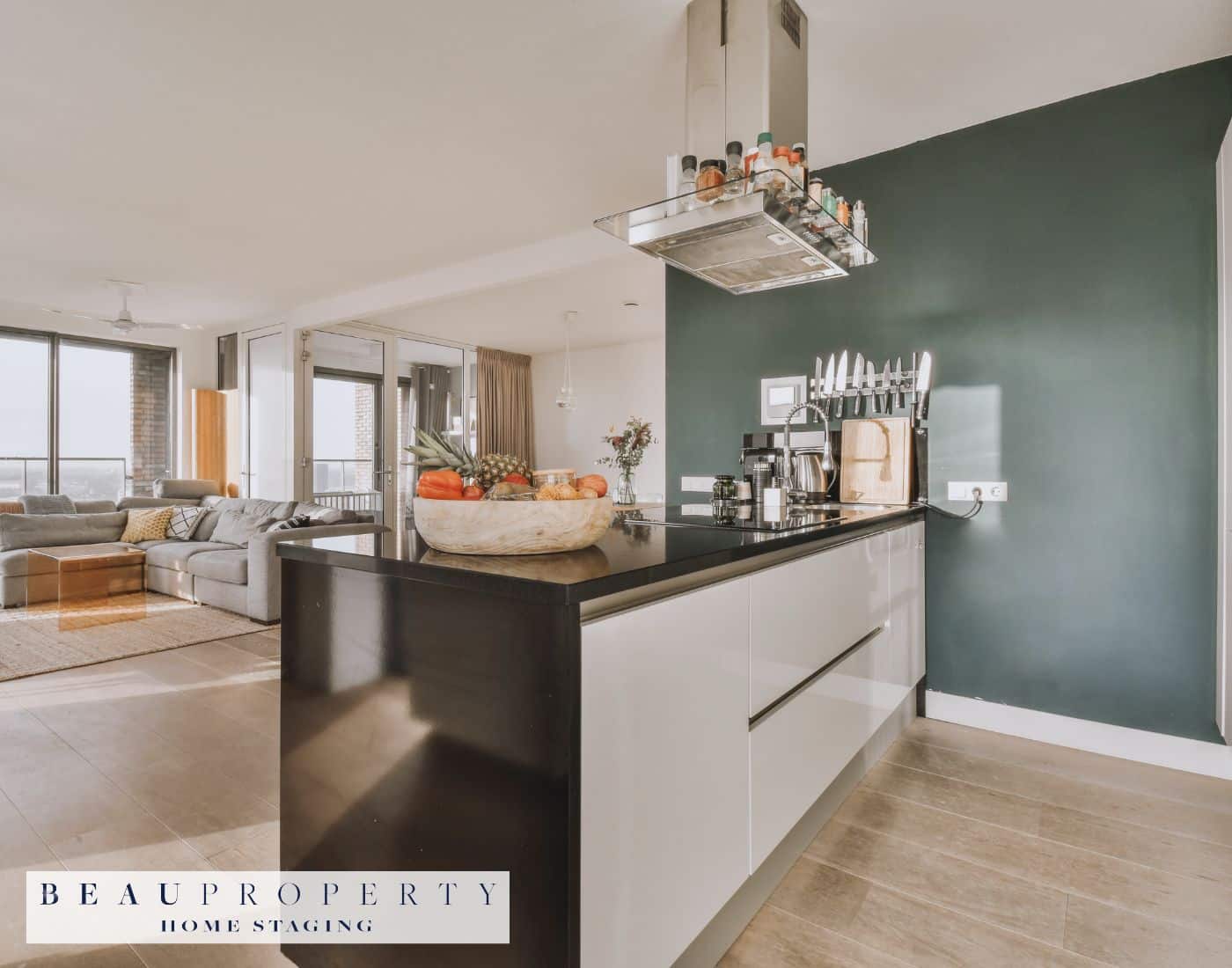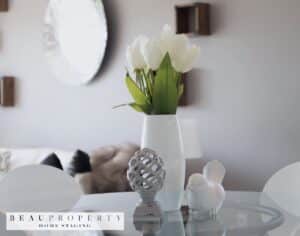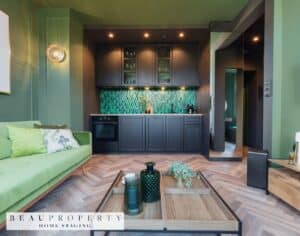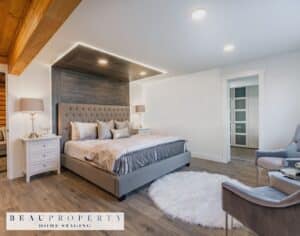Understanding Home Staging in the UK Market
Definition and Purpose of Home Staging in the UK Context
Home staging in the UK is the process of preparing a private residence for sale by enhancing its appeal to potential buyers. The primary aim is to make a property look more attractive, helping it sell faster and at a higher price. This preparation can involve redecorating, rearranging furniture, cleaning, and accessorising to present the property in the best possible light.
Staging is distinct from decorating because it focuses on appealing to buyers rather than personalising the space for the current occupants. It’s about neutralising the setting so potential buyers can envision themselves living there.
The Growing Importance of Staging in the Competitive UK Property Market
Home staging has gained substantial traction in the UK, becoming an essential strategy for property sellers. This rise in popularity can be attributed to the competitive housing market, where first impressions significantly impact buyers’ decisions. With more buyers becoming discerning, staging helps properties stand out by creating an inviting and appealing environment.
Properly staged homes allow buyers to envision themselves living there, which can be a deciding factor in their purchase decision. This is especially important in competitive markets where buyers often have multiple options to choose from.
Statistical Evidence Showing Impact on Sale Prices and Time on Market
The statistical evidence supporting the benefits of home staging is compelling. Homes that are staged sell on average 73% faster than non-staged homes. Additionally, staged homes tend to sell for 5-20% more than their non-staged counterparts.
Further, staged properties in the UK market have an average market time of 41 days, compared to a staggering 99 days for non-staged properties. This dramatic difference highlights the effectiveness of staging in reducing the time a property remains on the market.
As more property sellers recognise these advantages, the trend towards professional home staging continues to grow, solidifying its role as a vital component of the property selling strategy.
The Financial Benefits of Professional Staging
Average Return on Investment
Professional home staging in the UK is an investment with substantial returns. On average, properties that are professionally staged achieve a 5-20% higher sale price compared to non-staged properties. The return on investment for staging often outweighs the initial costs, making it a lucrative decision for homeowners. This financial benefit alone justifies the expenditure on professional staging services, reflecting positively on the final sale price.
Typical Staging Costs as Percentage of Property Value
Home staging typically costs between 1-3% of the property’s value. Although this may seem like a significant upfront cost, it is relatively minor when offset against the potential increase in sale price. For instance, staging a property valued at £300,000 might incur costs of £3,000 to £9,000 but could lead to an added value of up to £60,000. This demonstrates how staging costs are a wise investment when aiming to maximise the property’s attractiveness and saleability.
Impact on Reducing Price Negotiations and Market Time
One of the greatest advantages of professional staging is its impact on reducing the time a property spends on the market. Staged homes average a market time of 41 days, in stark contrast to the 99 days for non-staged homes. This reduction in market time is beneficial not only financially but also in terms of convenience and stress minimisation for the seller. Additionally, professionally staged properties tend to attract higher initial offers, leading to fewer price negotiations. This smoother negotiation process is critical in competitive markets, where buyers often make quick decisions based on first impressions.
Professional staging plays a pivotal role in ensuring properties stand out and attract the right buyers swiftly. To maximise these benefits, it is essential to prepare the property meticulously before staging.
Essential Pre-Staging Preparations
Comprehensive Decluttering and Depersonalisation Strategies
Before you stage your home, it is essential to declutter and depersonalise the space. Decluttering involves removing any unnecessary items that may cause the property to look congested. This not only creates a cleaner look but also allows potential buyers to focus on the home’s features without distractions. Begin by focusing on one area at a time to avoid feeling overwhelmed. Sorting items into piles for keeping, donating, and disposing can help streamline the process.
Depersonalisation is equally important as it helps create a neutral environment where buyers can imagine themselves living. Remove personal photos, souvenirs, and any items that reflect your personal taste. Instead, replace them with neutral decor to appeal to a broader audience.
Conducting Necessary Repairs and Maintenance
Addressing necessary repairs and maintenance ensures that the home is in the best possible condition for prospective buyers. Routine maintenance tasks such as mowing the lawn and sweeping hallways are essential for maintaining curb appeal and the property’s overall appearance. Additionally, small repairs like patching holes in walls, replacing air filters, and ensuring appliances are functioning properly can significantly impact buyers’ perceptions.
Preventive maintenance, such as regular inspections and repairs, is crucial in avoiding costly system failures and repairs later. Addressing issues like boiler upgrades, double glazing, and additional insulation can also enhance the property’s energy efficiency and appeal.
Obtaining Relevant Property Documentation
Preparing necessary property documentation is vital in the pre-staging process. One critical document is the Energy Performance Certificate (EPC), which assesses the energy efficiency of a property. The EPC survey will consider various factors including the type and age of the property, construction materials, and heating systems. Ensuring this documentation is up-to-date and readily available can provide potential buyers with confidence in the property’s compliance and efficiency.
By implementing comprehensive decluttering and depersonalisation strategies, conducting necessary repairs and maintenance, and ensuring all relevant property documentation is in order, sellers can significantly enhance the appeal of their homes to potential buyers.
Ensuring these steps are meticulously followed sets the stage for effective home staging and elevates the property’s marketability.
The 3-Foot/5-Foot Rule in Home Staging
Understanding Close-Up Details Visible from 3 Feet Away
The 3-foot rule in home staging focuses on the fine details within a room viewed from a closer perspective. The goal here is to ensure that everything within this range is impeccably arranged and free from imperfections. Small details such as clean countertops, organised nightstands, and well-maintained appliances play a critical role in creating a positive impression on potential buyers.
- Clear and Clean Surfaces: Countertops should be spotless and decluttered, removing unnecessary items like extra appliances and knick-knacks.
- Attention to Detail: Ensure that every visible corner is clean and polished. This may involve regular spot cleaning to remove dust or smudges from surfaces and appliances.
- Aesthetically Pleasing Elements: Incorporate subtle yet inviting elements such as fresh flowers or neatly arranged cushions to evoke a sense of quality and comfort.
By meticulously focusing on these close-range details, a property can convey a sense of care and quality, which can be a deciding factor for buyers.
Optimising Overall Room Design Visible from 5 Feet Away
The 5-foot rule pertains to the overall design of a room when viewed from a broader perspective. At this distance, the room’s balance, cohesiveness, and flow come into play. Home stagers need to consider how the room feels as a whole, ensuring it appears inviting and spacious.
- Cohesive Design: Strive for a style that is consistent and harmonious. This includes coordinating colours, textiles, and décor to create a unified look. Neutral tones can serve as a solid foundation, allowing focal items like artwork or furniture to stand out.
- Furniture Placement: Arrange furniture to enhance the room’s flow. Clear pathways should be evident, providing ease of movement and avoiding obstruction. This helps in making smaller rooms appear larger and more functional.
- Visual Equilibrium: Balance is crucial. Larger furniture pieces should be proportionate to the room’s size to avoid overwhelming the space. Smaller items should complement rather than clutter the area.
By focusing on these aspects, stagers can create environments that are visually appealing and comfortable, helping buyers envision themselves living in the space.
Balancing Detailed Staging with Broader Room Appeal
Achieving a balance between the detailed staging seen at 3 feet and the overall room appeal visible from 5 feet is essential for effective home staging. This integrated approach ensures the property is attractive from all perspectives.
- Minimalist Décor: To achieve this balance, avoid overcrowding a room with décor. Instead, use a few high-impact pieces that align with the room’s theme.
- Functional Arrangements: Ensure that furniture and decorations highlight the room’s intended use while facilitating natural movement and flow. This approach helps potential buyers see the room’s potential functionality without being distracted by unnecessary items.
- Neutral Colour Schemes: Use neutral tones to provide a blank canvas that allows buyers to imagine their own belongings in the space.
By maintaining this equilibrium, stagers can create a home that appeals to buyers on multiple levels, enhancing its marketability.
Continuing to focus on these detailed and holistic strategies will ensure every room is presented in its best light, increasing the property’s appeal and aiding in a faster, more profitable sale.
Professional Staging Techniques
Furniture Arrangement and Space Optimisation
Proper furniture arrangement is essential in professional home staging. Arranging furniture to complement a room’s dimensions and architectural elements enhances both its functionality and appeal. Begin by identifying the room’s focal points – such as fireplaces, windows, or built-in shelves – and arrange furniture to highlight these features. It’s crucial to create a natural flow of movement by following the established 3-Foot/5-Foot Rule, allowing for comfortable walking paths of three feet in smaller rooms and five feet in larger ones.
Avoid overcrowding rooms. A balanced and spacious arrangement makes even smaller rooms appear larger and more inviting. Use multifunctional furniture, like ottomans with storage or extendable dining tables, to maximise space. When selecting pieces, opt for a mix of sizes and shapes to add visual interest without overwhelming the room.
Lighting Strategies for Different Times of Day
Lighting plays a pivotal role in creating an inviting atmosphere. Utilise a combination of natural and artificial lighting to showcase your home in the best possible light at different times of the day. During daylight hours, draw back curtains or blinds to let in as much natural light as possible. Where natural light is limited, use mirrors strategically to reflect and amplify the available light.
For evening viewings, layer lighting with a mix of ambient, task, and accent lighting. Ambient lighting provides overall illumination, such as overhead fixtures. Task lighting, like table lamps or under-cabinet lights, highlights functional areas. Accent lighting, such as wall sconces or recessed lights, adds depth and highlights architectural features. Use warm light bulbs to create a cosy and homely feel while avoiding very bright or stark lighting, which can be uninviting.
Creating Welcoming and Neutral Environments
Neutral environments are key to appealing to a broad range of potential buyers. Choose a soft, neutral colour palette for walls, flooring, and large furniture items. Shades of beige, grey, or off-white create a blank canvas, enabling buyers to imagine their own belongings in the space. While the base should remain neutral, strategically incorporate pops of colour through accessories like cushions, throws, and artwork to add personality without being overpowering.
Ensure that each room has a specific purpose and is staged accordingly. For instance, a spare room could be set up as a home office or guest bedroom. This helps buyers envision the potential uses of each space. Additionally, maintain a clean and clutter-free environment. Personal belongings should be minimised to prevent distractions and allow the property’s features to stand out.
Effective staging through strategic furniture placement, thoughtful lighting, and neutral décor not only makes a property more attractive but also significantly boosts its market appeal. As potential buyers navigate through the home, these techniques will leave a lasting positive impression.
Common Staging Mistakes to Avoid
Over-Personalisation and Cluttered Spaces
One of the most significant mistakes in home staging is over-personalisation. It’s vital to remember that prospective buyers need to envision themselves living in the space. Personal items, such as family photos, unique collectibles, or personal memorabilia, should be minimised. The goal is to create a neutral environment that appeals to a broad range of tastes.
Clutter is another common issue. A cluttered space not only appears smaller but also distracts the buyer from seeing the property’s potential. Comprehensive decluttering strategies should be employed to create clean and open spaces. This includes decluttering countertops, shelves, and closets. A well-organised and tidy home makes it easier for buyers to focus on the property’s features rather than its contents.
Poor Furniture Placement and Lighting Choices
Furniture arrangement plays a crucial role in staging. Poor furniture placement can make rooms feel cramped, awkward, or non-functional. Ensure that furniture placement enhances the flow of the room and highlights its strengths. For example, in a living room, seating should be arranged to promote conversation and maximise the space available.
Lighting also has a significant impact on the perception of space and comfort. Poor lighting choices can make rooms feel dark and unwelcoming. Use a mix of natural light, where possible, and ambient, task, and accent lighting to create a bright, warm, and inviting atmosphere. Consider the time of day when viewings will occur and adjust lighting accordingly.
Neglecting Curb Appeal and Entrance Areas
First impressions are crucial, and the exterior of the property should not be neglected. The curb appeal and entrance set the tone for the entire viewing experience. Ensure that the front of the house is clean, well-maintained, and welcoming. This might involve simple tasks such as mowing the lawn, trimming hedges, or adding a few potted plants for a touch of colour.
Entrance areas should also be staged to create a positive first impression as buyers step inside. This area should be clean, decluttered, and well-lit. A welcoming entryway can leave a lasting positive impression and set the stage for the rest of the property.
Avoiding these common mistakes is essential for successful home staging. By focusing on neutralising personal touches, optimising furniture and lighting, and enhancing curb appeal, homeowners can create a space that appeals to a wide audience and enhances the property’s marketability.
Preparing for Open House Events
Creating Optimal Viewing Paths Through the Property
Crafting an optimal flow for viewing can significantly influence buyers’ perceptions during an open house event. The key is to create a pathway that naturally guides visitors through the property while showcasing its best features. Clear the space of any unnecessary furniture to ensure the path is unobstructed. Use markers or signs to guide visitors from room to room, ensuring they view the space in the most advantageous order. This tactic not only helps maintain order during busy showings but also ensures every important aspect of the home gets the attention it deserves.
Staging Different Rooms for Maximum Impact
Different rooms serve different purposes, and staging each room to highlight its intended use is essential.
- Living Room: This is often the first room visitors see. Arrange the furniture to create a cosy, inviting space. Ensure there is enough seating for a family, but avoid overcrowding the room. Opening curtains or blinds can flood the space with natural light, making it feel larger and more welcoming.
- Kitchen: A spotless, clutter-free kitchen is crucial. Clear small appliances and personal items from countertops. Adding simple decorations like a bowl of fresh fruit can help inject some life into the space.
- Bedrooms: These should evoke a sense of calm and relaxation. Ensure beds are made with neutral bedding, and consider the placement of decorations and furniture to avoid a cramped feel. Ensuring storage spaces like wardrobes are tidy and organised can also make a significant impact.
- Bathrooms: Cleanliness is paramount. Counters should be clear, and any personal items removed. Fresh towels and simple decorative items like a small plant or candles can help create a spa-like atmosphere.
Preparing Marketing Materials and Property Information
Comprehensive and appealing marketing materials are invaluable in leaving a lasting impression on potential buyers. These materials should include:
- Property Brochures: High-quality brochures that provide detailed information about the property, including high-resolution images, floor plans, and key features.
- Flyers and Business Cards: These should be readily available for visitors to take. They serve as a quick reference once they leave the property.
- Online Listings: Ensure the property is listed on major real estate websites, complete with detailed descriptions, professional photos, and virtual tours if possible.
- Signage: Place clear and professional signage leading up to the property and at the entrance. This will help attract passersby to the open house event.
Having an effective combination of these materials can significantly enhance interest and recall for potential buyers, making it easier for them to envision making the property their own.
Throughout the process, maintaining the property’s staged appearance is crucial. This ensures that every potential buyer, regardless of when they visit, sees the home at its best.
Post-Staging Maintenance
Maintaining the Staged Appearance Throughout the Selling Period
Keeping your home looking consistently appealing during its time on the market is crucial for maintaining buyer interest. The first step is to establish a regular cleaning schedule to ensure that every room is spotless. This includes daily tasks like dusting furniture, cleaning countertops, and vacuuming floors. Along with routine cleaning, ensure that any misplaced items are quickly returned to their designated spots, maintaining the organised and welcoming atmosphere achieved through staging.
Another important aspect is to monitor the condition of any staged items. Furniture and decor should remain in good condition, and be ready for viewings at any time. This may involve periodically fluffing pillows, adjusting decor items, and ensuring that linens are freshly laundered.
Quick Fixes for Last-Minute Viewings
Unexpected viewings can happen, and being prepared for these can make a significant difference. A checklist for last-minute fixes can be invaluable. Essential tasks on this checklist might include:
- Quick Declutter: Remove any personal items, including mail, keys, or children’s toys.
- Surface Cleaning: Wipe down surfaces such as kitchen counters and bathroom sinks.
- Lighting: Turn on all lights to enhance the room’s brightness and create a welcoming environment.
- Air Quality: Ensure that the home smells pleasant by using air fresheners or light scents, and avoid strong or pungent smells.
- Curb Appeal: Check the exterior for any immediate improvements, such as sweeping the front porch or tidying up the garden.
These quick actions can ensure the home is always presented in its best light, regardless of unplanned visits.
Adjusting Staging Based on Viewer Feedback
Paying attention to buyer feedback is a valuable tool for optimising staging efforts. After viewings, real estate agents often collect comments from prospective buyers. Review these insights carefully – they can highlight areas that might need adjustment. For example, if multiple viewers mention rooms feeling small, consider rearranging or even removing some furniture to create more space. If viewers suggest that the home feels too impersonal, adding a few neutral decorative items can offer a lived-in, yet universally appealing feel.
Being flexible and responsive to this feedback allows you to continuously improve the staging, ensuring the property remains appealing and competitive in the market.
By maintaining the staged condition, being prepared for last-minute viewings, and adjusting based on feedback, you can keep the property attractive to potential buyers, increasing the chances of a swift sale.







